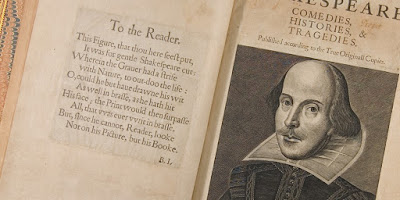The Poetry Hub
"Weaving the words
In a rhythmic line
We live our pain twice
But that's fine!"
A poet is a person who beautifully frames the words, the feelings and the emotions in such a manner that the reader feels the pain and joy behind those words. And poetry is something where a person anonymously pours his heart out.
Poetry evokes emotions, imaginations and elevates thoughts. It gives a sense of rhythmic composition to life making it more beautiful.
When a poet writes, his piece of work is unique, but it follows a pattern. Poetry has various patterns and forms. Amongst them, the following nine are the primitive one.
Up first is
Haiku - Haiku is a short three liner poetry originated in Japan. It follows the 5 7 5 pattern in syllables. It officially became a form of poetry in the 17th century.
Sonnet - A sonnet is a fourteen line poem with a fixed rhyme scheme. Sonnets were invented by the Italian poet Giacomo da Lentini during the 1200s. It is basically a little song or small lyric.
Ballad - Ballads orginally were dance songs. They are a form of verse, often a narrative set to music. It is mostly on romantic character or sentimental character, having two or more stanzas all sung in the same rhythm.
Free Verse – One can manifest the idea of free verse as a free, untouched beauty of putting one’s emotions in to a poetic style. It is a poesia (poem) with no regular meter or rhythm. It is a free acoustic open form poetry or mixed form poetry expressing its musical effects of rhythm and sound. It does not have a fixed pattern and involves repetitions, alliterations, occasional rhymes and pattern of assonance.
Limerick – It is a poem that consists of five lines in a single stanza with a rhyme scheme of AABBA. Though, most limericks proffer a humorous tone, some limericks are also considered to be bawdy, suggestive or downright incident. It follows an anapaestic meter, with short and simple pattern. One striking feature that separates limerick from other poems is that it is composed with same structure and pattern.
Villanelle – This rustic song of Italy, villanelle is highly structured poem of nineteen lines comprising of five tercets followed by a quatrain, with two repeating rhymes and two refrains. A typical villanelle has no well – organized meter and it follows an ABA rhyme scheme.
Acrostic – This is a unique style of poem wherein the first letter in every line of a text spell out a specific phrase. For example: -
Roses are red,
Oranges yummy,
Sugar’s sweet,
Elixir in my tummy.
Ode – It’s a touch of ancient Greece, that praises an individual, an idea, or an event. It is highly solemn and serious in its tone. It follows a uniform metrical foot with elaborate patterns and stanzas. It is known as ceremonious poem and it also has a formal tone.
Elegy – This is a poem of serious reflection, usually a lament for dead. It is a form of poem, wherein the poet can express his grief, sadness and loss. It is usually written in an elegiac meter. It consists of 16 lines each divided in to four stanzas. It continues the ancient tradition of Greek culture and enhances its richness.
So, these are some of the foremost poetic styles. These styles are unique, special and explicit in their own ways. Hence, to conclude, poets of today’s generation should definitely get a good grip over these styles and make the best use of them while showcasing their piece of work.
Sometimes you need
The words to breathe
To meet you unappointed
To take you gently to the air
Though you may be disjointed
And as you read, you too will breathe
And they'll leave you, when you've parted
Somewhat better than what you started.




Comments
Post a Comment